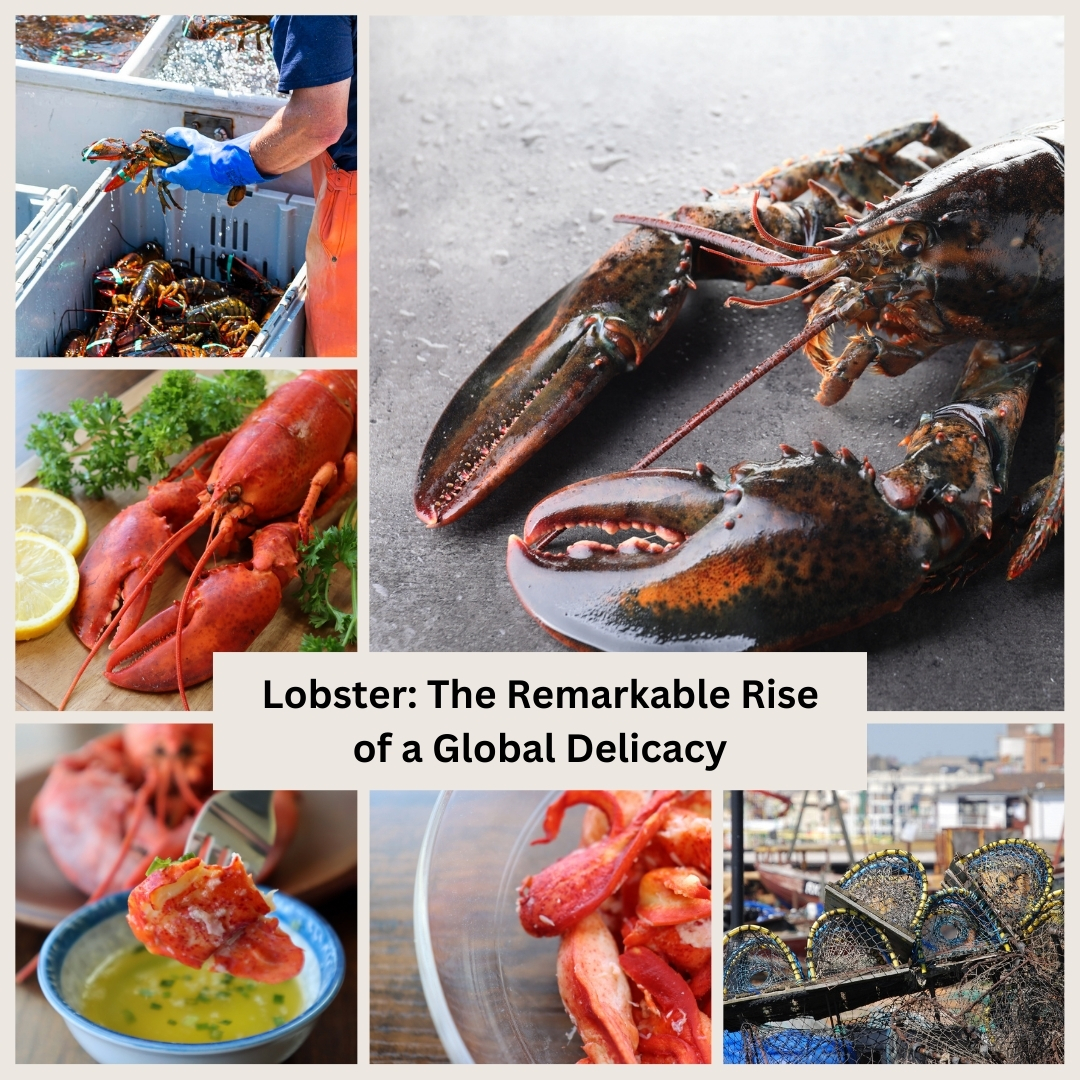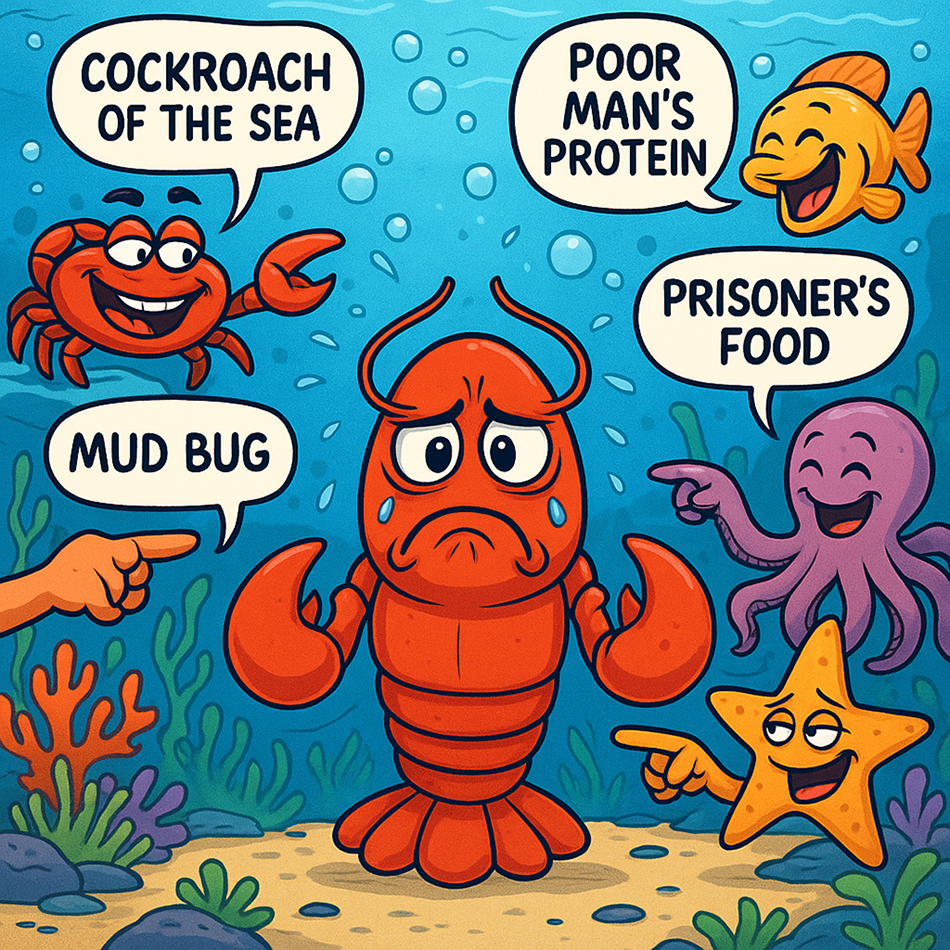Lobster: The Remarkable Rise of a Global Delicacy
If you’ve ever sat down to a lobster dinner – whether it’s a classic lobster roll on the East Coast, a buttery lobster tail at a Canadian steakhouse, or a sizzling ginger-scallion lobster at a Chinese banquet – it’s hard to believe that this luxurious crustacean was once considered little more than a pest. The story of lobster is a tale of transformation, crossing oceans and cultures, and ultimately uniting people around the world in their love for this sweet, succulent seafood.

The Western Story: From Humble Beginnings to Haute Cuisine
Let’s start on the rocky shores of North America. In the 17th and 18th centuries, lobsters were so plentiful along the Atlantic coast that they would wash up in massive piles after storms. Early European settlers and Indigenous peoples saw them as a reliable, if not exactly desirable, food source. Lobster was so abundant and easy to catch that it became known as “the poor man’s protein.” It was routinely served to prisoners, apprentices, and even farm animals. In fact, some servants in colonial Massachusetts had contracts stating they wouldn’t be forced to eat lobster more than two or three times a week – a detail that’s almost comical today.
The reason for this lowly status was partly practical: lobsters were bottom-dwellers, scavenging the ocean floor, and their spiny, alien appearance didn’t help their reputation. For a long time, eating lobster was almost embarrassing, a sign that you couldn’t afford anything better.
But as the 19th century rolled on, things began to change. The expansion of the railway system meant that lobster could be canned and shipped inland, where it was still considered a cheap source of protein. However, as fresh lobster became available in big cities like Boston and New York, chefs began to experiment with new ways to prepare it – boiled, broiled, baked with butter, or served in creamy bisques. Wealthy diners developed a taste for lobster, and its image began to shift from humble to haute cuisine. By the late 1800s, lobster had become a symbol of indulgence, gracing the tables of the elite and the menus of fine restaurants.
Today, lobster is the star of the show at seafood feasts and special occasions across Canada and the United States. Whether it’s a simple lobster boil on the beach or an elegant lobster thermidor, this once-maligned crustacean is now a symbol of celebration and luxury.
Lobster’s journey from undesirable to delectable is even more amusing when you consider some of the less-than-flattering names it was called back in the day. Here are a few of the more colourful and unpleasant nicknames lobsters acquired during their less-esteemed period:
- Cockroach of the Sea: This is probably the most common and evocative of the insults hurled at lobsters. It highlights their bottom-feeding habits and their somewhat alien appearance, associating them with a creature generally considered repulsive.
- Sea Scorpions: This name plays on the lobster’s clawed and segmented body, likening it to a dangerous and venomous creature. It emphasizes the lobster’s intimidating appearance rather than its potential as food.
- Mud Bugs: This term refers to the lobster’s habitat, suggesting that they are dirty and live in undesirable conditions. It’s a way of associating the lobster with the muck and mire of the ocean floor.
- Poor Man’s Protein: While not inherently insulting, this name underscores the lobster’s status as a cheap and readily available food source for those who couldn’t afford better. It highlights the lobster’s lack of prestige.
- Prisoner’s Food: This label is pretty self-explanatory and speaks to the lobster’s use as a cheap and filling meal for those incarcerated. It’s a direct association with a lack of choice and a low social status.
- Livestock Feed: The fact that lobsters were sometimes fed to animals like pigs further illustrates their low value. It suggests that they were considered more suitable for animal consumption than for human consumption.

Lobster in Asian Cuisine: A Symbol of Celebration and Good Fortune
While lobster’s reputation in the West had to be rehabilitated, in many Asian cultures, it has long been associated with festivity, prosperity, and good luck. In Chinese cuisine, lobster is a showstopper at banquets, weddings, and Lunar New Year feasts. One of the most beloved preparations is Cantonese-style lobster, where the lobster is chopped into pieces, lightly battered, and stir-fried with ginger, scallions, and sometimes a savoury black bean sauce. The vibrant red shell is considered lucky, and the dish is as much about the festive presentation as it is about the sweet, tender meat.
In Japan, lobster is treated with a sense of reverence and artistry. High-end sushi restaurants might serve lobster sashimi, where the raw meat is delicately sliced and presented with wasabi and soy sauce. Lobster is also used in tempura, grilled preparations, and even in miso-based soups. The Japanese spiny lobster, or “ise-ebi,” is especially prized and is often served during special occasions like New Year’s celebrations, symbolizing longevity and good fortune.
Across Southeast Asia, lobster appears in a variety of creative dishes. In Thailand, you might find lobster in spicy curries or grilled and served with tangy dipping sauces. In Vietnam, lobster is sometimes steamed with lemongrass or cooked in rich, aromatic broths. In each of these cultures, lobster is a highlight at gatherings and special meals, always bringing a sense of occasion to the table.
The Universal Appeal of Lobster
What’s truly remarkable about lobster is how it has managed to transcend its humble beginnings and become a symbol of celebration in so many different cultures. In the West, it’s a story of redemption – a food once scorned, now revered. In Asia, it has always been a sign of good fortune and festivity. And today, as culinary borders blur, lobster continues to bring people together, whether it’s the centrepiece of a Canadian summer feast, the highlight of a Lunar New Year banquet, or the star of a creative fusion dish.
So next time you crack open a lobster claw, take a moment to savour not just the flavour, but the incredible journey behind this remarkable crustacean – a journey that now spans the globe, uniting East and West in celebration, and reminding us that sometimes, the most unexpected foods can become the most beloved.
Try our lobster recipes
If you’re ready to cook, check out the lobster recipes already posted on our website. You’ll find approachable, step-by-step ideas all written for home cooks and perfect for weeknights or a special occasion.

